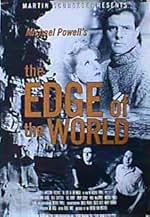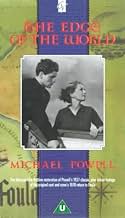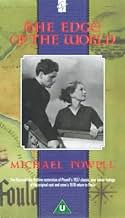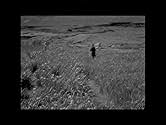CALIFICACIÓN DE IMDb
7.3/10
2.3 k
TU CALIFICACIÓN
La forma de vida está desapareciendo en el puerto pesquero de una isla de las Hébridas Exteriores, pero algunos de los habitantes se resisten a evacuar al continente.La forma de vida está desapareciendo en el puerto pesquero de una isla de las Hébridas Exteriores, pero algunos de los habitantes se resisten a evacuar al continente.La forma de vida está desapareciendo en el puerto pesquero de una isla de las Hébridas Exteriores, pero algunos de los habitantes se resisten a evacuar al continente.
- Dirección
- Guionistas
- Elenco
- Premios
- 1 premio ganado y 1 nominación en total
Niall MacGinnis
- The Gray Family: Andrew, His Son
- (as Niall Macginnis)
James Garrioch
- Doctor Attending Ruth's Baby in Lerwick
- (sin créditos)
Andy Gear
- Villager in Evacuation
- (sin créditos)
Mima Gear
- Villager in Evacuation
- (sin créditos)
Wullie Gear
- Fiddler at Hirta Reel
- (sin créditos)
Aggie Jean Gray
- Member of the Congregation
- (sin créditos)
Agnes 'Nannie' Gray
- Member of the Congregation
- (sin créditos)
Edith Gray
- Member of the Congregation
- (sin créditos)
James Andrew Gray
- Member of the Congregation
- (sin créditos)
Jean 'Jeannie' Gray
- Member of the Congregation
- (sin créditos)
- Dirección
- Guionistas
- Todo el elenco y el equipo
- Producción, taquilla y más en IMDbPro
Opiniones destacadas
Odd little film directed by Michael Powell long before his huge success once teamed with Emeric Pressburger.
Subtitled "the death of an island," the film chronicles the dreary lives of island folk as seen in flashback by the former residents years after. Victims of the changing world, commercialized fishing, and isolation, the islanders finally pack it in and move to the mainland after the death of one young man and a near miss with a baby.
Set in an era before electricity and telephones the film shows just how isolated the people are on the various islands north of Scotland. Independent and stubborn, they cling to their rock even though they know the end is coming.
The story is slim: the young people are in crisis of whether to stay and keep the island going or go to the mainland and get good-paying jobs. The story shows us their lives on the island of Hirta (which means death) and the draw of the cities.
Almost shot in documentary form, Powell constantly shows us the majestic beauty of the sparse rock of island versus the drab lives of the people. Their lives are built around church, social interaction, and trying to keep going.
The acting is minimal with a few familiar faces. John Laurie is the hard father who sees his son (Eric Berry) die in a stupid accident while climbing the face of sea rock. Belle Chrystall is Ruth and Niall MacGinnes is Robbie. Finlay Currie co-stars.
The island scenery is just gorgeous and Powell has a good eye for the incredible backdrops of sea and rock and waving grasses.
Subtitled "the death of an island," the film chronicles the dreary lives of island folk as seen in flashback by the former residents years after. Victims of the changing world, commercialized fishing, and isolation, the islanders finally pack it in and move to the mainland after the death of one young man and a near miss with a baby.
Set in an era before electricity and telephones the film shows just how isolated the people are on the various islands north of Scotland. Independent and stubborn, they cling to their rock even though they know the end is coming.
The story is slim: the young people are in crisis of whether to stay and keep the island going or go to the mainland and get good-paying jobs. The story shows us their lives on the island of Hirta (which means death) and the draw of the cities.
Almost shot in documentary form, Powell constantly shows us the majestic beauty of the sparse rock of island versus the drab lives of the people. Their lives are built around church, social interaction, and trying to keep going.
The acting is minimal with a few familiar faces. John Laurie is the hard father who sees his son (Eric Berry) die in a stupid accident while climbing the face of sea rock. Belle Chrystall is Ruth and Niall MacGinnes is Robbie. Finlay Currie co-stars.
The island scenery is just gorgeous and Powell has a good eye for the incredible backdrops of sea and rock and waving grasses.
This early effort by director Michael Powell is simply a stunning visual treat. Shot on location on one of the British isles,the visuals are both dramatic and beautiful.What amazed me was how different this movie was from others I've seen from the same period.It seemed so modern in the way of storytelling. The basic story of the film is quite predictable but the actors commitment heightens the drama's impact. John Laurie is the standout in the cast.But what lingers is the powerful depiction of the harsh life on these isles,constantly battling nature's forces.This movie is a cherished record of a way of life that now has almost completely disappeared. To fans of Michael Powell this is a must-see, and I recommend this amazing film to everybody.
If I had to name one of my favourite film directors, a few always come to mind, and they always include Michael Powell. He has made some of the (for me) most fascinating, thrilling, strange, intriguing and often exhilarating movies ever. He has made about 60 films in about 40 years and plenty of them would easily fit into my all time favourite top-10 films: The Red Shoes, Black Narcissus, The Life and Death of Colonel Blimp, Peeping Tom, Gone To Earth, A Canterbury Tale, 49th Parallel, One of Our Aircraft is Missing, A Matter of Life and Death, I Know Where I'm Going, Contraband, A Spy in Black - I can recommend them all as essential viewing if you are interested in English cinema of the 1940s and 1950s. Now the Arts Channel (in New Zealand) decided to screen one I hadn't seen before, The Edge of the World, from 1937. A tragic and powerful tale of an isolated island off the coast of Scotland (in Roman times known as Ultima Thule, the island of Foula standing in for St Kilda) affected by diminishing local resources of fuel and manpower, causing emigration, economic, social and environmental decline. It was fascinating and moving to see the stories of local families intertwined with the larger social and economic issues driving change. A constant recurrence of a cinematic theme throughout the film was gravity, which of course pulls everything down: people and sheep falling off cliffs, the pull of the wider world out there affecting the economic base of the island, fishing, livestock and crofting. The camera angles are fascinating throughout as every scene is filmed either from a upward or downward position, emphasising the will of men to fight for what they want and believe in, or being looked on by the camera acting as mother nature overwhelming the actors by the majestic cliffs, pounding seas and constant winds. You'd wish there could have been another outcome for the people involved but in the end it seems it's not possible to live at the edge of the world: you either choose to leave or die on the island.
A new version was reportedly released in 1978 ,featuring a color sequence where the director and the actors-survivors went on a pilgrimage to Foula.It was called "return to the edge of the world" .This is not the version I saw and it seems that none of the other users could see it either.It's really a pity.
Powell is my favorite English director.He's the only one who 's got a sense of mystery.His pictures are art,poetry in motion.He films the sea (a harsh mistress) and the desolate landscapes in a dazzling way.His influence on David Lean ("Ryan's daughter") is obvious.But I'm almost sure old wave French Jean Delannoy (not meant pejoratively) had this movie in mind when he made his own "Dieu a Besoin des Hommes" (a story in a remote Breton island ).And the almost documentary side of the movie predates Robert Bresson's asceticism.
Some called it melodramatic:on the contrary,Powell avoids its clichés; the unmarried mother became generally an outcast,most of all the French Marcel Pagnol films revolved around this subject.But Ruth's child is a new hope for the inhabitants.The sequence when they dance to a violin tune is the one really happy moment in the whole film.
The times are changing.The way of life their fathers used to know is coming to an end.Powell's movie gains an universal meaning :the situation he depicted happened (and is still happening) here there and everywhere.
Powell is my favorite English director.He's the only one who 's got a sense of mystery.His pictures are art,poetry in motion.He films the sea (a harsh mistress) and the desolate landscapes in a dazzling way.His influence on David Lean ("Ryan's daughter") is obvious.But I'm almost sure old wave French Jean Delannoy (not meant pejoratively) had this movie in mind when he made his own "Dieu a Besoin des Hommes" (a story in a remote Breton island ).And the almost documentary side of the movie predates Robert Bresson's asceticism.
Some called it melodramatic:on the contrary,Powell avoids its clichés; the unmarried mother became generally an outcast,most of all the French Marcel Pagnol films revolved around this subject.But Ruth's child is a new hope for the inhabitants.The sequence when they dance to a violin tune is the one really happy moment in the whole film.
The times are changing.The way of life their fathers used to know is coming to an end.Powell's movie gains an universal meaning :the situation he depicted happened (and is still happening) here there and everywhere.
What's it like to live on a treeless rock in the middle of the roiling north Atlantic. We get a pretty good idea from master film-maker Michael Powell who set up his camera in such a place with a few actors, a scant script, and actual residents as extras. And a heck-of-a movie it is. The result looks like something from the neolithic era, with its crude rock huts, long barren vistas, and a few hunkered-down plants, along with jagged cliffs rising out of the sea like the face of God. One thing for sure -- there's no lack of fresh air .
I can't imagine the movie was made for commercial potential. It resembles Robert Flaherty's gripping documentary of life in the Irish Sea, Man of Aran, which may be why Powell distinguished his effort with a story-line. But the visuals are quite similar. And that's fine, because the craggy vistas are unforgettable. This is close to movie making at its purest and most visual. In fact, on another viewing, I think I'll turn off the sound and simply gasp at the other-world imagery.
The story may be secondary, but it's appropriate. The few remaining islanders are leaving after centuries of habitation because of deteriorating conditions. There's a romantic complication, but thankfully it doesn't get in the way. A few scenes etch themselves in my memory-- the sheep dogs lined-up outside the crude church, the tiny mail-carrying boats tossed into the sea like wishes, but most of all, the overawing sea cliffs, endless in their poetry and power. It's got to be here that the earth meets the sky or whatever it is that's above.
Rather hard for me to believe that this spartan black and white was made by the same artist who made the splashy Technicolors of The Red Shoes and Peeping Tom. But Powell excelled at cinema regardless of format, putting him in the same league as the few other British masters like Alfred Hitchcock. But whatever the pedigree, this 80 minutes of air, rock and water remains a really compelling oddity.
I can't imagine the movie was made for commercial potential. It resembles Robert Flaherty's gripping documentary of life in the Irish Sea, Man of Aran, which may be why Powell distinguished his effort with a story-line. But the visuals are quite similar. And that's fine, because the craggy vistas are unforgettable. This is close to movie making at its purest and most visual. In fact, on another viewing, I think I'll turn off the sound and simply gasp at the other-world imagery.
The story may be secondary, but it's appropriate. The few remaining islanders are leaving after centuries of habitation because of deteriorating conditions. There's a romantic complication, but thankfully it doesn't get in the way. A few scenes etch themselves in my memory-- the sheep dogs lined-up outside the crude church, the tiny mail-carrying boats tossed into the sea like wishes, but most of all, the overawing sea cliffs, endless in their poetry and power. It's got to be here that the earth meets the sky or whatever it is that's above.
Rather hard for me to believe that this spartan black and white was made by the same artist who made the splashy Technicolors of The Red Shoes and Peeping Tom. But Powell excelled at cinema regardless of format, putting him in the same league as the few other British masters like Alfred Hitchcock. But whatever the pedigree, this 80 minutes of air, rock and water remains a really compelling oddity.
¿Sabías que…?
- TriviaIn the scene of the race up the cliffs, the actors did their own climbing. According to director Michael Powell's book on the making of the film, Eric Berry in particular did some risky work indeed, especially in the shots of him clambering up the waterfall.
- ErroresThe wild Golden Eagle at the beginning has the falconer's jesses (leather straps) visible.
- Citas
The Gray Family: Andrew, His Son: Do you think I don't care about Robbie? Do you think I'd forget that he was your twin brother and my best friend?
- Créditos curiosos[before opening credits] The slow shadow of Death is falling on the outer isles of Scotland. [scrolls up] This is the story of one of them -- and all of them. When the Roman Fleet first sailed round Britain they saw from the Orkneys a distant island, like a blue haze across a hundred miles of sea. They called it - "ULTIMA THULE" [main title] THE EDGE OF THE WORLD
- ConexionesFeatured in Return to the Edge of the World (1978)
- Bandas sonorasChorus
(uncredited)
Composer unknown
Performed by The Glasgow Orpheus Choir
Conducted by Hugh S. Roberton
Selecciones populares
Inicia sesión para calificar y agrega a la lista de videos para obtener recomendaciones personalizadas
- How long is The Edge of the World?Con tecnología de Alexa
Detalles
Taquilla
- Presupuesto
- GBP 20,000 (estimado)
- Tiempo de ejecución1 hora 21 minutos
- Color
- Relación de aspecto
- 1.37 : 1
Contribuir a esta página
Sugiere una edición o agrega el contenido que falta

























